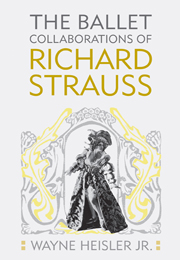Book contents
- Frontmatter
- Contents
- List of Illustrations
- Acknowledgments
- Introduction: Richard Strauss, Dance, and Ballet
- Part One Becoming a Ballet Composer, 1895–1914
- 1 Strauss en route to Die Insel Kythere (The Isle of Cythera, 1900)
- 2 Josephslegende (The Legend of Joseph, 1914), Léonide Massine, and the Music Box Dancer
- Part Two “To drive away all cloudy thoughts,” 1919–1941
- Epilogue
- Notes
- Works Cited and Consulted
- Index
- Eastman Studies in Music
2 - Josephslegende (The Legend of Joseph, 1914), Léonide Massine, and the Music Box Dancer
from Part One - Becoming a Ballet Composer, 1895–1914
Published online by Cambridge University Press: 12 September 2012
- Frontmatter
- Contents
- List of Illustrations
- Acknowledgments
- Introduction: Richard Strauss, Dance, and Ballet
- Part One Becoming a Ballet Composer, 1895–1914
- 1 Strauss en route to Die Insel Kythere (The Isle of Cythera, 1900)
- 2 Josephslegende (The Legend of Joseph, 1914), Léonide Massine, and the Music Box Dancer
- Part Two “To drive away all cloudy thoughts,” 1919–1941
- Epilogue
- Notes
- Works Cited and Consulted
- Index
- Eastman Studies in Music
Summary
This Legend seems to be merely a good Strauss copy; and that is not enough when it comes from [Strauss] himself. (Diese Legende wirkt nur wie eine gute Strauß-Kopie; und das ist zu wenig, wenn sie von ihm selber herrührt.)
—Richard Specht, Richard Strauss und sein Werk (1921)With premieres in Paris and London by Serge Diaghilev's Ballets Russes, the ballet-pantomime Josephslegende (or La Légende de Joseph) was poised to follow in the footsteps of a series of revolutionary performances choreographed by Michel Fokine. The debut of Josephslegende on May 14, 1914 in Paris was framed on the program by the Ballets Russes premiere of Fokine's Papillons (originally premiered in St. Petersburg in 1912 with Schumann's Op. 2 orchestrated by Nicholas Tcherepnine), as well as a revival of Fokine's wildly popular Schéhérazade, which had debuted in Paris in 1910 during the second saison russe. Behind Josephslegende stood a creative team that comprised the vanguard of pre–World War I artists and personalities: Diaghilev and Fokine, as well as Hugo von Hofmannsthal and Count Harry Kessler (coauthors of the libretto), Vaslav Nijinsky (the original choreographer and intended creator of the role of Joseph), Léonide Massine (the eventual first Joseph), Léon Bakst and Alexandre Benois (costumes), and José-María Sert (scenic design, based on Bakst's initial conception). Moreover, Josephslegende was the company's first and only collaboration with Richard Strauss, one of the most prominent living composers of the day.
- Type
- Chapter
- Information
- The Ballet Collaborations of Richard Strauss , pp. 46 - 96Publisher: Boydell & BrewerPrint publication year: 2009

